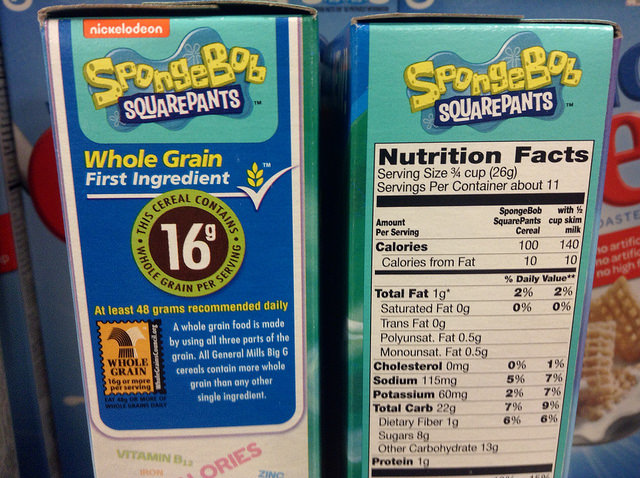The prime real estate for the nutrition world is all set for an overhaul! The FDA’s announcement to revise the Nutrition Facts label has reignited debate within the nutrition community. After nearly 25 years of the familiar Nutrition Facts label, experts agree on its importance, but opinions differ on what the label should say and how they should say it.
The Nutrition Facts label was introduced in 1990 with the passage of the Nutrition Labeling and Education Act. It is currently present on over 6 billion packaged foods. The label is meant to function as an important communication tool for educating the public. The assumption is that people will use this nutrition information to make informed, and perhaps healthier, purchases. These healthier food choices might ultimately lead to better long-term health.
What might seem like a straightforward goal is anything but, given the complexity of the label and the information it presents. The current label lists the recommended serving size, calories, and macro- and micro-nutrient content of the product in grams and percentages. That’s a mouthful already, and we haven’t even started with the mental math!
Nutrient information in grams does not translate intuitively to real-world measures of teaspoons and cups. Moreover, manipulating numbers and percentages can be overwhelming at the best of times, and using that information to then reach a conclusion on the nutrition quality of the product is downright burdensome. Very few people understand what Percent Daily Value means or how this information could be used to decide whether a product is healthy. It is no wonder that the people who use these labels most frequently are those with higher than average education levels, incomes, and nutrition knowledge.
The proposed changes to the Nutrition Facts label include improvements in label design, alignment of nutrient requirements with current scientific knowledge, and corrections of inconsistencies in the reporting of serving sizes. (Check out the proposed changes in full detail.) They have already generated considerable debate among nutrition experts and the food industry, especially around the inclusion of added sugar. Moreover, there is surprisingly little data on whether the changes in the pipeline will be better understood by consumers.
I recently co-wrote a paper to summarize the science on this topic. I learned that a large number of people have trouble manipulating nutrition information with respect to serving size and recommended amounts (Percent Daily Values), and most rarely look beyond the first five lines of the Nutrition Facts label. We also found that adding simple text like high/medium/low makes labels more user-friendly.
The Nutrition Facts label overhaul is the perfect opportunity to upgrade both the presentation and content of the information so that it can be more accessible to over 90 million Americans with limited literacy skills. While there may not ever be consensus within the nutrition community about what recommendations should be made, we can at least design a label that is easy to read!
IMAGE SOURCE: Spongebob Kids Breakfast Cereal Nutrition Label Info Facts , General Mills, 9/2014, by Mike Mozart of TheToyChannel and JeepersMedia on YouTube

